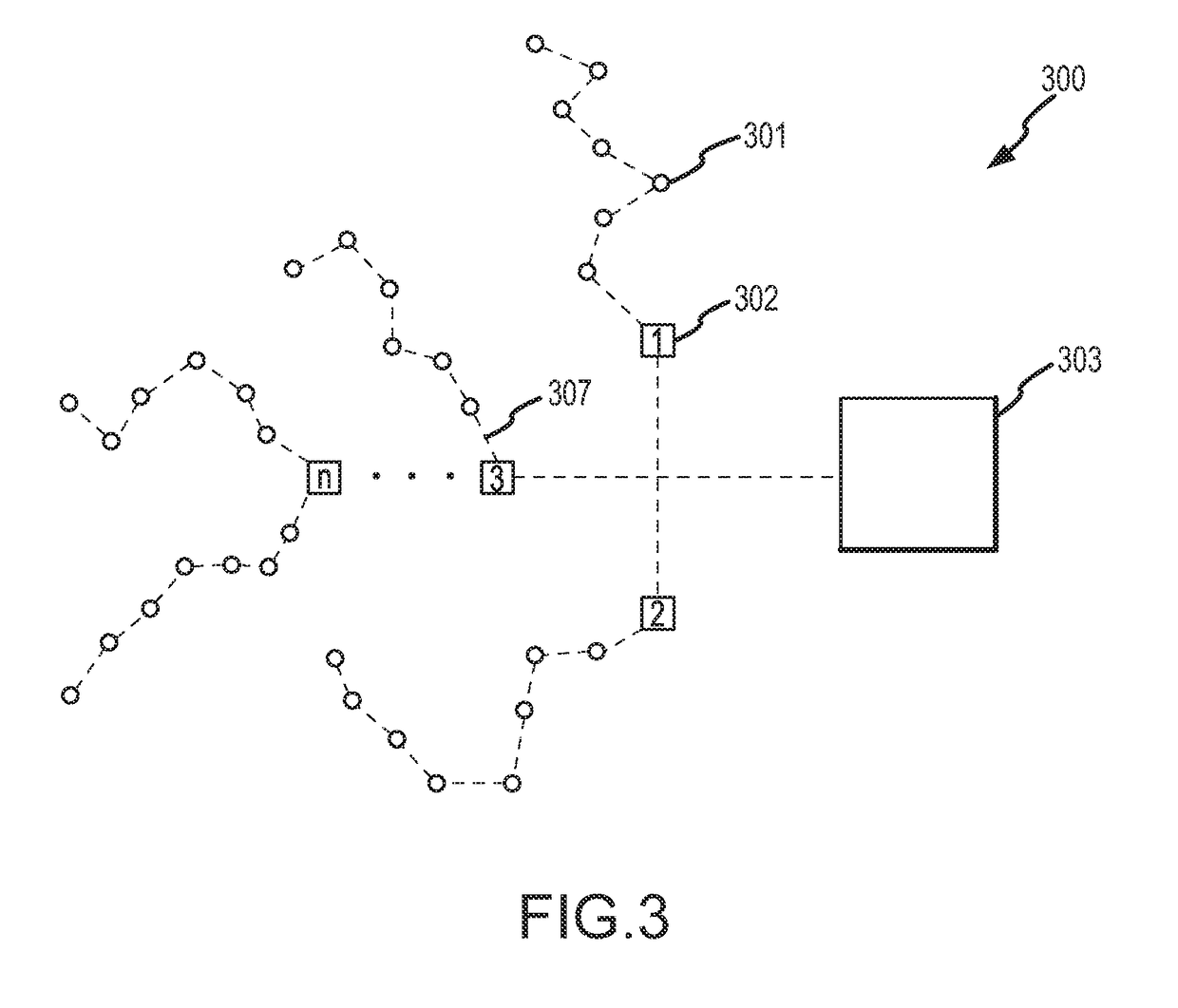Multiplexing signature allocation for wireless exploration system
a wireless exploration and multi-signature technology, applied in the direction of seismic signal transmission, etc., can solve the problems of cable reliability problems, increase the cost of survey, and compromise the quality of survey, so as to reduce or eliminate interference and reduce the potential for cross talk or interference
- Summary
- Abstract
- Description
- Claims
- Application Information
AI Technical Summary
Benefits of technology
Problems solved by technology
Method used
Image
Examples
Embodiment Construction
[0029]While the invention is susceptible to various modifications and alternative forms, specific embodiments thereof have been shown by way of example in the drawings and are herein described in detail. It should be understood, however, that it is not intended to limit the invention to the particular form disclosed, but rather, the invention is to cover all modifications, equivalents, and alternatives falling within the scope of the invention as defined by the claims.
[0030]FIG. 1 depicts a common physical layout of a conventional seismic survey. A number of remote data acquisition modules 101 are connected by cables in a line and arrayed on the ground. Connected to each of the modules is one or more sensors configured as individual sensors, multi-component sensors, or strings of sensors wired into groups. Each of the modules may contain electronics to amplify, digitize, and store the signals from the sensors, or in the case of digital sensors, collect and store the data. The remote...
PUM
 Login to View More
Login to View More Abstract
Description
Claims
Application Information
 Login to View More
Login to View More - R&D
- Intellectual Property
- Life Sciences
- Materials
- Tech Scout
- Unparalleled Data Quality
- Higher Quality Content
- 60% Fewer Hallucinations
Browse by: Latest US Patents, China's latest patents, Technical Efficacy Thesaurus, Application Domain, Technology Topic, Popular Technical Reports.
© 2025 PatSnap. All rights reserved.Legal|Privacy policy|Modern Slavery Act Transparency Statement|Sitemap|About US| Contact US: help@patsnap.com



